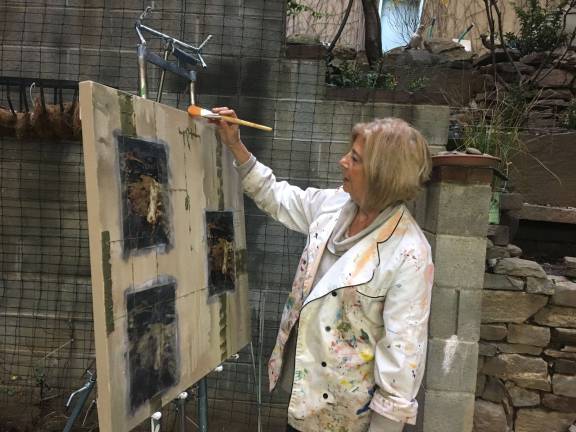the color and the shape



Each day, Susi Raphael travels from her East 86th Street home to her art studio in Chinatown. Once there, she puts on a white smock blotched with colors and starts painting.
A lifelong resident of the Upper East Side, Raphael, 63, took early retirement from her public relations job at the American Cancer Society six years ago and enrolled in her first art class. It was an epiphany.
“I got a studio and I just started,” Raphael said among the canvases in her Broome Street studio. “I had always loved materials and walking into art stores; I was fascinated by paints, brushes and palette knives. Finally, I had a reason to buy art tools.”
Raphael’s first work was a collage, a passion along with her love for photography. In the 1990s, she had a number of photography exhibitions, but later discovered her talent for combining colors on canvas. With little formal training — an artist teacher guided her for a while — Raphael started painting, following only her instinct and spontaneity.
“I felt like an artist when I got my studio in Chinatown. It put my head in another dimension,” she said. “If I had had a studio within four blocks of my home on the Upper East Side, it would have been just another part of my daily life with my duties and my routine. Chinatown made the difference.”
As she spoke, Raphael pointed out her latest artwork — an unfinished painting with layers upon layers of warm colors — leaning on an easel. Small spots of brown color mix with string, the whole unfolding according to one’s vantage point. This is her style and her aim: to offer the spectator not a classical image but an abstract visual that propels the viewer’s imagination.
“I like that, in my paintings, there are layers and you can go into it,” she said. “Anyone seeing my work brings his or her own experience and sensibility to my paintings, making them personal discoveries. You will see whatever you want to see and, sometimes, I hear some very odd opinions.”
The series, called “Traces,” comprises four multi-textured and multi-layered works in shades of red. The canvases convey that sense of wonder, even bewilderment, qualities that accompany all of Raphael’s art. She surprises herself each time she starts a new painting, nearly always unsure of her subject, and wants to trigger unexpected reactions. Someone might eventually distinguish an animal or a tree, she said, while Raphael might discern a face or a creature.
“I like to resonate with my viewers, to listen to their opinions, to create a collaborative artistic adventure,” Raphael said. This exchange between artist and viewer occurs most pointedly during exhibitions. The artist has shown at numerous New York City venues including La MaMa La Galleria, the Donnell Library, the French Institute/Alliance Francaise and, most recently, at a Lower East Side gallery, where she exhibited a collection titled “Our Vanishing Earth.”
Joyful and exuberant, Raphael spends at least four hours in her studio painting, or just staring at canvas. “I love red and beige, and my palette is formed by warmer rather than cooler color. I’m not a blue person,” she said.
When Raphael first looks at a blank stretch of canvas, she doesn’t yet have a clear idea of her next work, she said. “I feel exactly the direction; it’s something emotional,” she explained. “If a painting doesn’t work, I just think that this is not going anywhere and I don’t want to waste time doing something that is not working.”
Two paintings hang on the studio wall. They will soon form part of another corpus of works. Another painting is on the easel in the small open space, which is surrounded by trees and populated by pigeons. Nature helps the artist find an inspiration, as does travel, museums and the city’s art galleries.
“I spend most of my time in my studio learning to paint like a child, as Picasso said,” she said. “To me, it means to have fun and to be happy painting.”